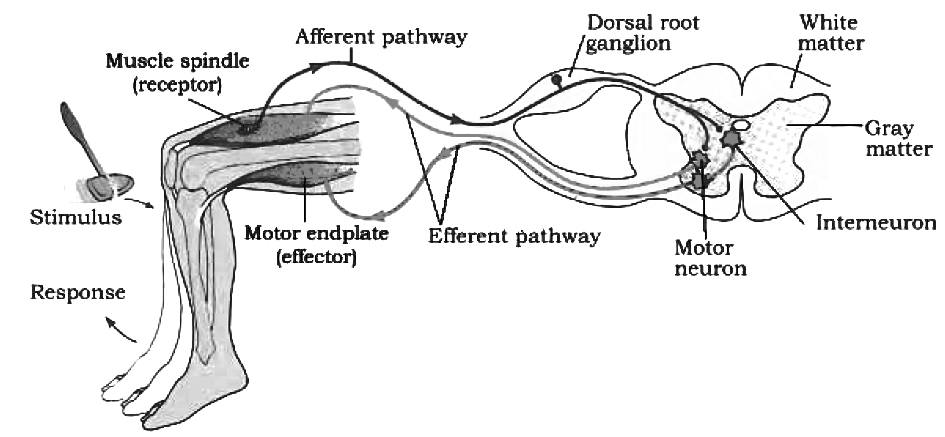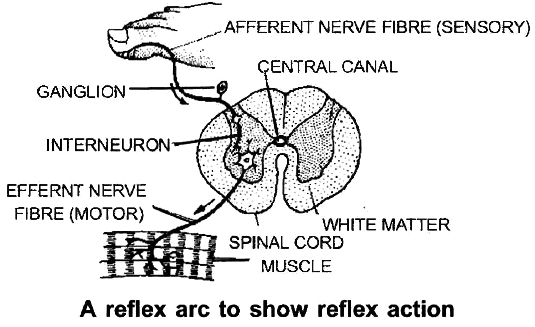- Books Name
- ACME SMART COACHING Biology Book
- Publication
- ACME SMART PUBLICATION
- Course
- CBSE Class 11
- Subject
- Biology
Reflex Action and Reflex Arc
The reflex action is the simplest kind of activity which can be defined as an integrated activity occurring involuntarily in response to a stimulus applied to a receptor.
The reflex arc is composed of the following:
(i) receptor organ; (ii) an afferent neuron; (iii) synapse involving some cells in the CNS (modulator); (iv) an efferent neuron; and (v) an effector organ.
(A) Reflexes can be classified in a number of ways as follows:
(a) Unconditioned reflexes: These are inborn, e.g., knee jerk, salivation on tasting the food, peristalsis, closing of eyes on being approached by an object.
(b) Conditioned reflexes: These are acquired, i.e., developed after birth through conditioning or learning e.g., secretion of saliva after seeing tasty food, playing a musical instrument, knitting without looking, writing as well as reading.
(B) According to the number of synapses in the reflex path
(a) Monosynaptic reflexes: When there is only one synapse in the reflex path. e.g., Knee jerk.
(b) Polysnaptic reflexes: When there are more than one synapse in the reflex path.

Concept Builder
Salivation on seeing or hearing or smelling delicious food; is an example of cerebral reflex action and withdrawl of legs; when a drop of HCl drop over the sciatic nerve of decapitated frog is an example of spinal reflex action.
Characteristics of Reflexes
Although the reflexes are involuntary functions, they have certain features which make them highly complicated. Some important characteristics are:
(i) Predictability: Once the response of an organ to a specific stimulus is observed, one can predict that the same stimulus will always elicit the same response.
(ii) Purposefulness: Generally all reflex actions are useful to the organism and are performed with a definite purpose.
(iii) Localization : In performing a reflex action, a specific effector is involved in response to the stimulus applied to a specific receptor.
(iv) Delay: Reflex time is the interval between the application of the stimulus to a receptor and the beginning of a response by an effector organ. A synaptic delay occurs due to latent period and reflex time at the synapse. This depends upon the number of synapses in the nerve pathway.
(v) Unlearned: In order to activate spinal effector mechanisms, no experience is needed to bring them in operation.
(vi) Adjustive and Protective: Reflexes serve adjustive and protective purposes and become an important part of the animal behaviour.
(vii) Fatigue: Reflex responses are readily fatigued after prolonged and continuous work. As a consequence, the latent period of contraction becomes longer and the rise of tension smaller and more gradual.


 ACME SMART PUBLICATION
ACME SMART PUBLICATION
